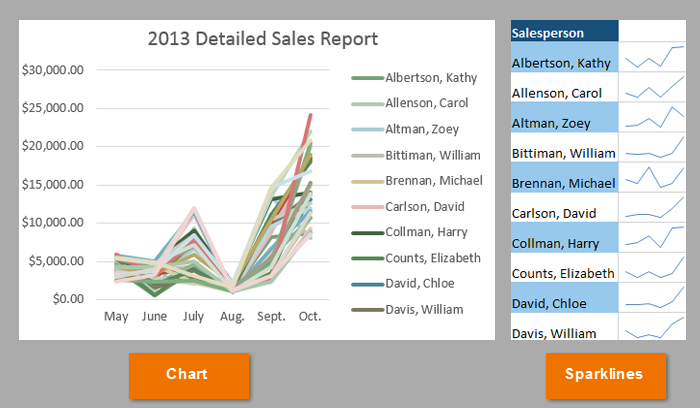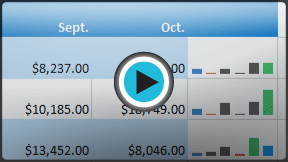Excel 2013
Sparklines
Introduction
Sometimes you may want to analyze and view trends in your data without creating an entire chart. Sparklines are miniature charts that fit into a single cell. Because they're so compact, it's easy to include several sparklines in a workbook.
Optional: Download our Lesson 23 Practice Workbook.
Types of sparklines
There are three different types of sparklines: Line, Column, and Win/Loss. Line and Column work the same as line and column charts. Win/Loss is similar to Column, except it only shows whether each value is positive or negative instead of how high or low the values are. All three types can display markers at important points, such as the highest and lowest points, to make them easier to read.
 Line
Line Column
Column Win/Loss
Win/LossWhy use sparklines?
Sparklines have certain advantages over charts. For example, imagine you have 1000 rows of data. A traditional chart would have 1000 data series to represent all of the rows, making relevant data difficult to find. But if you placed a sparkline on each row, it will be right next to its source data, making it easy to see relationships and trends for multiple data series at the same time.
In the image below, the chart is extremely cluttered and difficult to follow, but the sparklines allow you to clearly follow each salesperson's data.
 The same data visualized in a chart and in sparklines
The same data visualized in a chart and in sparklinesSparklines are ideal for situations when you need a clear overview of the data at a glance and when you don't need all of the features of a full chart. On the other hand, charts are ideal for situations when you want to represent the data in greater detail, and they are often better for comparing different data series.







